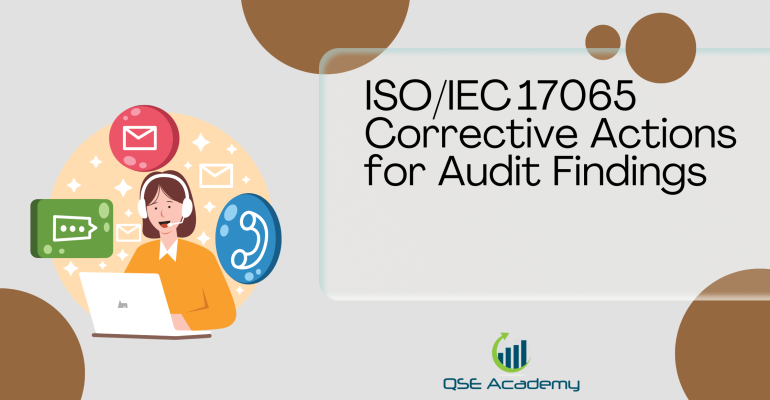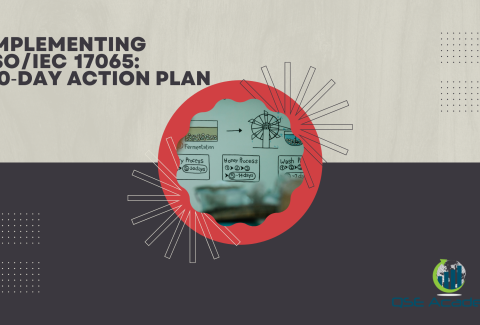ISO/IEC 17065 Corrective Actions for Audit Findings
Why Effective Corrective Actions Determine ISO/IEC 17065 Accreditation Success
Every time a certification body calls me after an audit, the mood is the same — “We got the findings, now what?” And honestly, that’s where the real work begins. The accreditation audit isn’t the end; it’s the point where your system shows whether it can recover, improve, and prevent issues from repeating.
Here’s what I’ve noticed across many accreditation cycles: corrective actions fail not because teams don’t want to fix the issue, but because they focus on quick fixes instead of understanding the root cause. When corrective actions are weak, assessors notice immediately. When they’re strong, they become evidence of a mature, well-controlled system.
In the sections below, I’ll walk you through how to build corrective actions that actually work — not just for the report but for your certification body’s long-term reliability.
Understanding ISO/IEC 17065 Corrective Actions (Purpose, Expectations, and Requirements)
Before we talk solutions, you need clarity on what corrective actions actually mean in ISO/IEC 17065.
Here’s the simple breakdown:
- Correction: Fix the immediate issue.
- Root cause: Why the issue happened.
- Corrective action: What prevents it from happening again.
- Effectiveness check: Evidence that the fix works.
This matters because assessors aren’t interested in cosmetic fixes. They’re evaluating whether your system can detect, resolve, and prevent failures.
Pro Tip: Fix the problem immediately, but only document the correction as a short-term measure. Your long-term corrective action should come from real root-cause analysis.
Common mistake: Calling everything “lack of training.” Nine out of ten times, the real cause is process oversight, unclear responsibilities, missing controls, or inconsistent application.
A few years ago, one CB received a repeat major non-conformity because their corrective action was literally one sentence: “Staff will be retrained.” Nothing changed. The issue reappeared during the reassessment, and the accreditation body escalated it.
 Root-Cause Analysis for ISO/IEC 17065 Findings (How to Identify Real Causes)
Root-Cause Analysis for ISO/IEC 17065 Findings (How to Identify Real Causes)
If you want your corrective actions to stick, start by finding the real root cause. And no — sitting in a meeting room and guessing doesn’t count.
Two tools I rely on constantly:
- 5-Why Technique
- Fishbone Diagram (Ishikawa)
Both force you to look beyond symptoms and understand the weakness in your system.
In ISO/IEC 17065, your causes usually fall into a few categories:
- Competence
- Scheme alignment
- Role separation
- Process control
- Documentation consistency
- Impartiality oversight
Pro Tip: Bring in the people who actually perform the process. They know where things break — not management.
Common mistake: Accepting the first “why” as the cause. If you only ask “why” once, you’ll fix the wrong issue.
One CB I worked with had a non-conformity related to competence. Their root cause analysis simply said, “Evaluator did not follow procedure.” But when we dug deeper, we found the real cause — the evaluator was using an outdated version of the scheme downloaded months earlier. The training wasn’t the issue; document control was.
Building Strong Corrective-Action Plans (ISO/IEC 17065-Compliant Approach)
Now that you’ve identified the real cause, it’s time to build a corrective-action plan assessors will take seriously.
A strong plan includes:
- Finding summary
- Correction (short-term action)
- Root cause with evidence
- Corrective action (long-term)
- Responsible person
- Deadline
- Evidence of implementation
- Effectiveness check plan
This structure shows assessors you understand the issue and that your system can prevent it.
Pro Tip: Make every corrective action measurable. If you can’t measure it, you can’t prove effectiveness.
Common mistake: Submitting corrective actions without evidence. Assessors hate conclusions without documentation.
I once worked with a CB that added measurable controls — such as quarterly sampling of evaluation reports — to prove their corrective actions were working. It impressed the assessor more than pages of narrative explanations.
Corrective Actions for Impartiality, Competence, and Process Findings (Clause-Specific Examples)
Let’s break this down by clause so you can align your corrective actions with the standard.
Clause 4 — Impartiality
Typical fixes:
- Re-do impartiality risk assessment
- Strengthen mitigation measures
- Document committee meetings and decisions
Clause 6 — Competence
Effective corrective actions:
- Update competency matrix
- Define minimum qualifications per scheme
- Re-evaluate personnel based on real criteria
Clause 7 — Process Requirements
Common strong responses:
- Update sampling plans
- Align evaluation steps with scheme rules
- Improve traceability of test results to evaluation decisions
Clause 8 — Management System
Strong corrective actions:
- Expand internal audit scope
- Improve complaints documentation
- Add effectiveness checks to corrective actions
Pro Tip: Call out clause numbers in your plan. Assessors appreciate clarity and alignment.
Common mistake: Using generic wording like “we will improve the process.” That’s too vague.
Verifying Effectiveness of Corrective Actions (How Accreditation Bodies Evaluate Results)
This is the step most certification bodies underestimate.
Accreditors typically verify effectiveness by:
- Reviewing updated records
- Interviewing staff
- Checking consistency in newly implemented procedures
- Sampling evaluation and decision records
- Looking at training outcomes
Your job is to present clean, traceable evidence.
Pro Tip: Perform an internal verification audit — even a mini one — before submitting your corrective-action evidence. It catches errors early.
Common mistake: Assuming implementation equals effectiveness. They’re not the same.
I worked with a CB that submitted updated procedures as proof. But when the assessor asked evaluators how the new procedures worked, the staff had no idea. That led straight to a repeat finding.
Preventing Repeat Non-Conformities (Long-Term System Improvements)
Repeat findings damage your credibility with accreditors. But they’re preventable if your corrective-action process is mature.
Ways to avoid recurrence:
- Use a dynamic internal-audit plan
- Strengthen document-control oversight
- Review scheme alignment annually
- Track impartiality risks quarterly
- Train evaluators on updated scheme rules
- Add a monitoring calendar for recurring activities
Pro Tip: Treat every NC as a window into your system — not as a problem to hide.
Common mistake: Closing actions too quickly. Real improvements take time.
FAQs – ISO/IEC 17065 Corrective Actions
How fast should I submit corrective actions?
Usually within 30–60 days, but early submissions with strong evidence leave a positive impression.
How deep should root-cause analysis go?
Deep enough to explain the real system weakness and why the issue wasn’t detected earlier.
Can corrective actions be rejected?
Yes — and they often are when causes are vague or evidence is weak.
Conclusion: Close ISO/IEC 17065 Findings with Confidence and Precision
Strong corrective actions do more than satisfy the accreditation body — they make your certification system more reliable, predictable, and defensible. If you identify the real cause, design a measurable action, and verify effectiveness, you’ll turn findings into improvements.
I’ve seen certification bodies transform their audit results simply by strengthening this one process. With the right structure, you can close findings quickly and prevent them from resurfacing next cycle.
Melissa Lavaro is a seasoned ISO consultant and an enthusiastic advocate for quality management standards. With a rich experience in conducting audits and providing consultancy services, Melissa specializes in helping organizations implement and adapt to ISO standards. Her passion for quality management is evident in her hands-on approach and deep understanding of the regulatory frameworks. Melissa’s expertise and energetic commitment make her a sought-after consultant, dedicated to elevating organizational compliance and performance through practical, insightful guidance.









